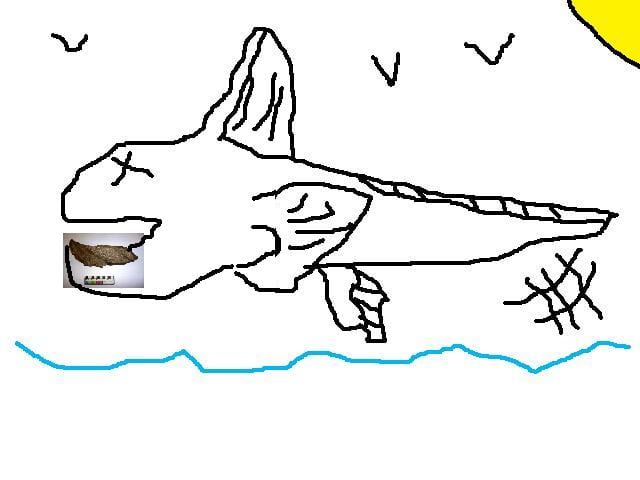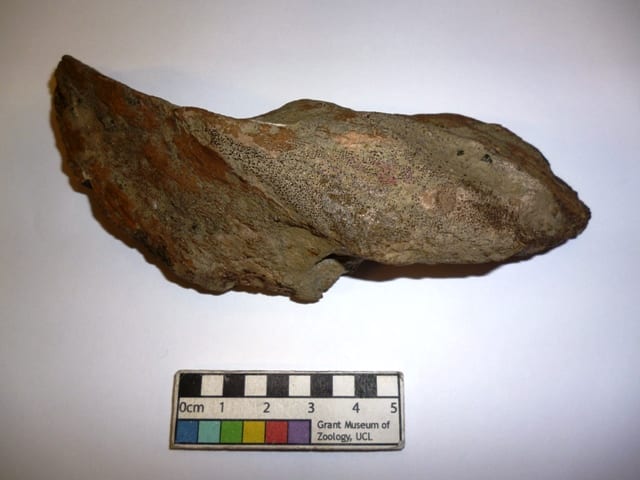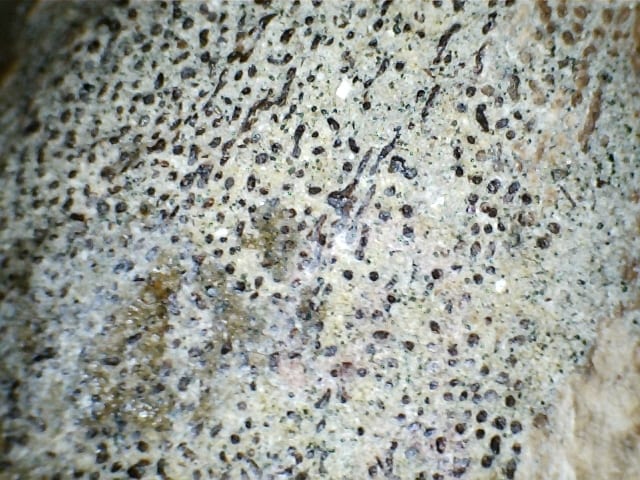Underwhelming Fossil Fish of The Month: October
By Mark Carnall, on 29 October 2013
12 MONTH UNDERWHELMING FOSSIL FISH OF THE MONTH BLOWOUT! We made it! Back in November last year we launched this series with the lofty ambition of increasing the global fossil fishteracy one fossil fish at a time. Shirley, it’s no coincidence that since this series started fossil fish have been making the news headlines for all the wrong reasons in the case of Megalodongate, as nobody is calling it, and for all the right reasons with Entelognathus primordialis maybe, possibly, unlocking the origins of jaws (not Jaws) as we know and love them today. We’re confident in claiming that this series alone propelled fossil fish stories into the limelight, leaping from life to life, striving to put right what once went wrong, and hoping each time that his next leap will be the leap home. There’s no other explanation.
There’s no cause for complacency though. This post marks the twelfth entry in the series, a calendar’s worth, but there’s a while to go until we reach enough for a Top Trumps deck or come anywhere close to unearthing the full mediocrity of the drawers and drawers worth of Underwhelming Fossil Fish we have here at the Grant Museum. So it’s with no aplomb we soldier on with October’s particularly uninspiring fossil fish.
Which is this beauty here. From the moment I set eyes on it I knew that this amorphous is-it-even-a-fossil would underwhelm, undazzle and not be worthy of notes. In time honoured tradition let’s give our eyes a light snack.
Amazingly, somebody has managed to identify this to Genus level. I initially suspected, as with other equally non descript UFFoTM this was identified from the locality as a “anything we find that’s big and brown we call XXXX” rather than because there’s anything particularly diagnostic or identifiable about it. According to the aforementioned label, this lump pertains to the Genus Edaphodon sp. Armed with this information which I ran through a popular Internet search engine I was surprised to find that this is pretty much what all Edaphodon fossils look like so perhaps the identification isn’t that suspect. Fossils like these have been identified as the dental plates of extinct chimaeriform fish.
Before we delve into dental plates let’s spare a thought for the poor chimaeras. Chimaeras are a group of cartilaginous fish that are still around today but which need a whole lot more love. The odds are stacked against them. First of all their cartilaginous stable-mates (fish in the group Chondrichthyes) are the far cooler, sexier and fearsome heavy hitters such as sharks, rays and skates. Secondly, it seems that everyone who has ever come into contact with them thinks they aren’t the most aesthetic fish. Their most common common name is chimaera, hinting at monstrous origins, but they are also known as rabbit-fishes, rat fishes, spookfish and elephant-fishes (confusingly there are also rabbit fish, spookfish and elephantfish, not related to chimaeras) so called for their striking resemblance to a fish with a rabbit’s head glued on. From a distance. If you squint a bit. If that wasn’t enough to keep chimaeras in the Z-list they’re relatively unknown creatures that appear to have been far more diverse in the past than they are today.
The business end of a chimaera, where this dental plate would have been in the living animal, is a rather difficult thing to understand. Fortunately, this link to a handy guide featuring some of the Grant Museum’s extant chimaeras, makes things marginally more comprehendible. I’m not so sure that this expertly created reconstruction by an up and coming undiscovered palaeontological illustrator helps at all.

There’s no evidence that Edaphodon ever leapt from the surface of the sea into the glistening sun. Or evidence that they didn’t.
Preservation Although it’s not much to look at at first, if you know what you’re looking for, this fossil betrays its identity in its preservation. Our resident fossil shark expert instantly identified this as a cartilaginous fish from the ‘black bobbly bits’, typical of preserved cartilage.
One of the reasons that the relationships of the chimaeras is so fuzzy is because cartilage doesn’t preserve very well in the fossil record. It is far less likely to be preserved before it has been dissolved, scavenged or otherwise destroyed. Hence our record of chimaeras is relatively incomplete. So in one respect, even though it doesn’t look like it, this fossil is relatively well preserved considering.
Research As usual with the fish featured here, the only contribution Edaphodon makes to science seems to be ‘checklist papers’ as inspiring as writing a shopping list. There is one exception though. You may remember 2006 for hit films Big Momma’s House 2, Nanny McPhee or V for Vendetta. Perhaps you recall Italy winning the world cup in the football or the downgrading of Pluto from a planet to piece of ‘annoying trivia’. I’ll always remember 2006 as the year that a new species of Edaphodon was discovered in the fossil record of New Zealand (Consoli 2006). The first record of this genus outside of the Northern Hemisphere.
In society Unlike the creature from Greek mythology that these fish take their name from, living chimaeras barely make it onto the popular culture radar let alone the long extinct fossil members of the group like Edaphodon. In fact, they’re so alien to us, you may remember receiving these hoax emails linked here back in 2004 and again in 2011 about strange sea creatures being washed up following Tsunamis in Japan and the Indian Ocean. Two of those ‘strange creatures’ are chimaeras. Bless them. Only interesting to us if we pretend we don’t already know what they are. ;(
Edaphodon sp.
Preservation 7
Research 2
In Society 0
Underwhelmingness 8.5
Mark Carnall is the Curator of the Grant Museum of Zoology
References
One Response to “Underwhelming Fossil Fish of The Month: October”
- 1
 Close
Close




In my (un)official position as (not the) Representative of the Ig Nobel awards (in any way whatsoever) I am awarding you a special prize (there is no actual prize) for this excellent series of articles about the mass of Great Unextracted, such as “Neglectus whocares”. Here’s to another twelve months of fishy stories. And another twelve months. And another… (One award per customer. This does not affect your statutories, so if they’re giving you gyp then it’s probably your rubbishy chair that’s to blame.)